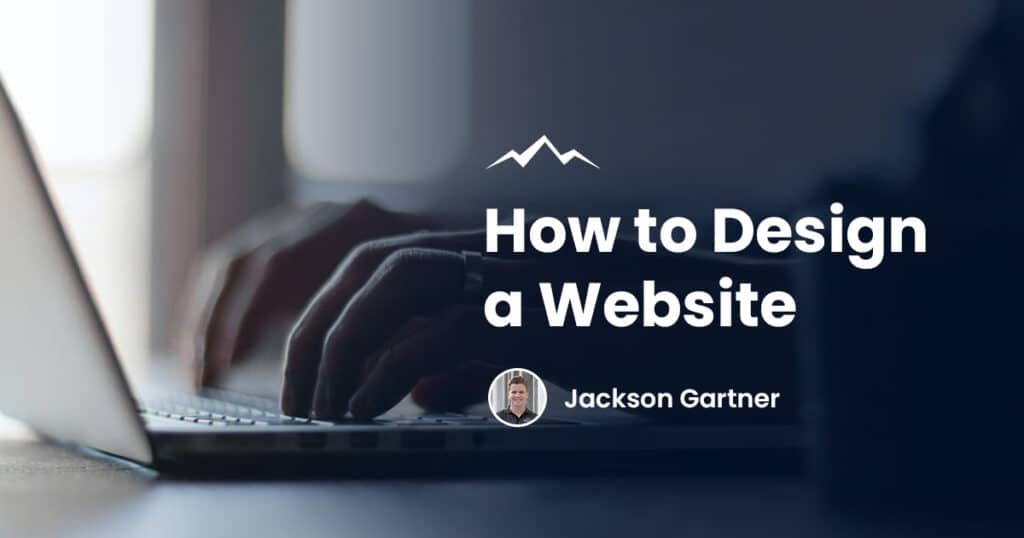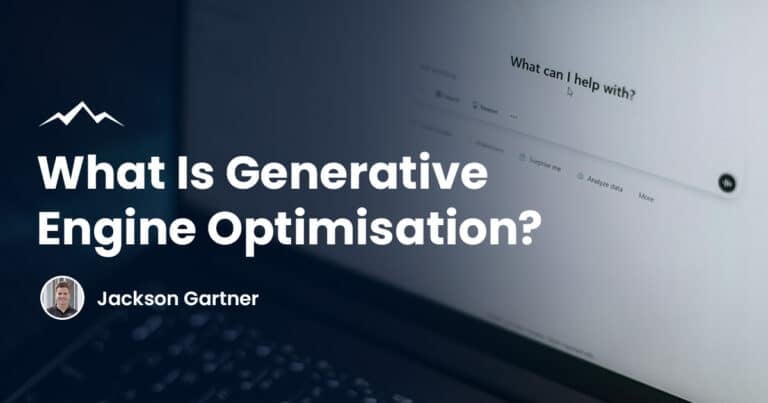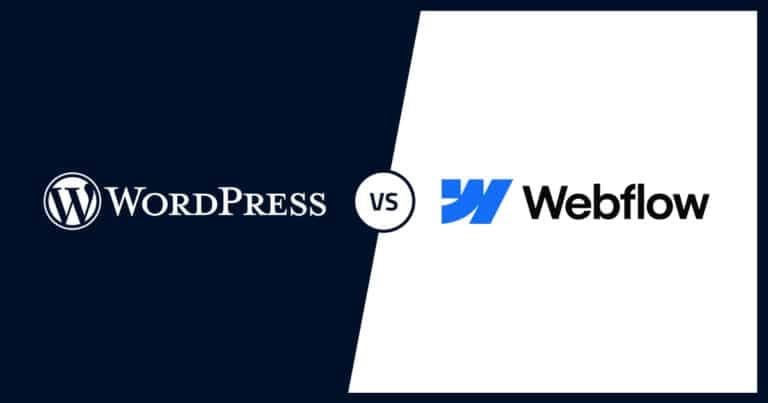Gone are the days of writing code yourself, now you can build your own site, thanks to web design companies, who can do all the hard work for you.
But just because you don’t have to write code, doesn’t mean you can build a great website without knuckling down.
In this step-by-step guide, we will teach you everything you need to know about building and designing a website that generates organic traffic and converts all by itself.
But before we learn how to design a website, let’s dive into the basics of web design.
Are you looking for help with your next web design project? Our team builds websites for clients all over Australia, including Brisbane, Sydney, Melbourne, Adelaide, Perth, Hobart, Canberra, Gold Coast and the Sunshine Coast.
What is Web Design?
Web design is the process of creating the visual look and feel of a website. But that’s not all it’s about. These days, it often involves a strong focus on user experience or “UX”, which is all about improving how a user perceives and responds to a website.
Web design isn’t just about how awesome your website looks on the surface, it’s also about how easy it is for visitors to navigate around and get what they need from your site, like important information and links.
You might think a website is simply that, a website, and that as long as you have one, your business will succeed. Unfortunately, this is not always the case. An outdated and uninviting website can hurt your brand in more ways than one.
So how can you set your business up to succeed online? By designing a thoughtful and targeted website that is quick and easy for your visitors to use.
As mentioned above, web design encompasses the overall visual impression given to your audience.
Web design covers all the visual elements on your entire website, from structure and layout to images, colours, fonts, and graphics. Everything!
Want to learn more? Take a look at our article: What is Web Design?
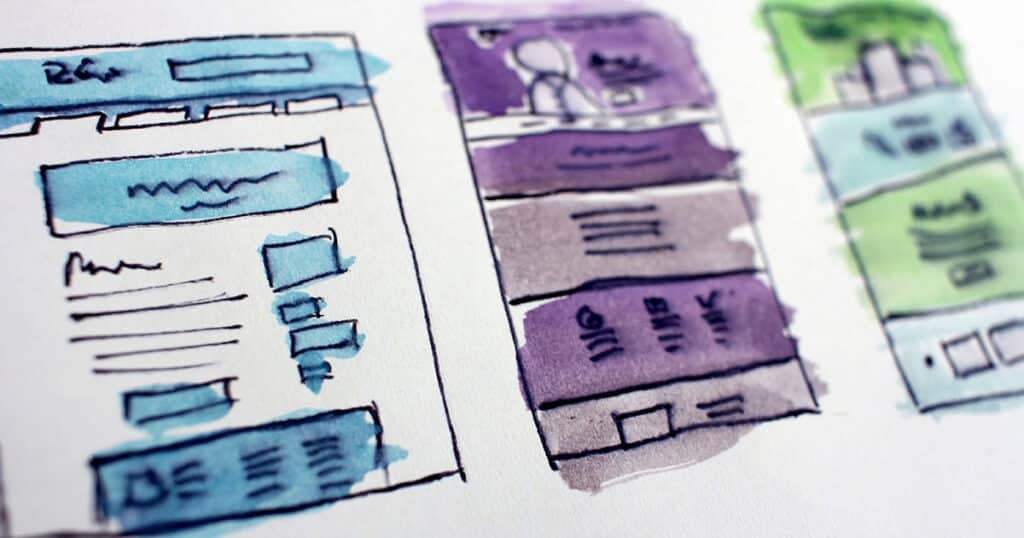
Why Does Web Page Design Even Matter?
It’s all about making a good first impression. Did you know that 38% of your website visitors will leave your site based on its looks alone?
It’s important to know how to create a web page that is not only going to grab visitors’ attention, but will also stay in their minds long after they have left. Because at the end of the day, first impressions matter.
For example, when you’re browsing for shoes online, what’s the first thing you notice on a website you find? Is it the layout, colours, pictures? And if the website is confusing and poorly designed, will you stay or leave for a better one?
The same can be said for the existence of the website itself. If customers are searching online for a business and can’t find it on Google, they might assume that the brand isn’t professional enough to have a website or has gone out of business.
Now think about your prospective customers. Since your relationship with them begins on your website, you have to make sure you’re building a website that reflects the personality and values of your business, has incredible content, and is easy to use.
Show your visitors that you care enough about your own brand to build a killer website. This will go a long way in building trust with your audience.

Is Your Website Design Good Enough?
Since web design is primarily about how your website looks, you might think that it is subjective. It isn’t.
But we get it. With other types of design, a lot of what constitutes “good” is up to your taste. But that’s not the case with good web design, where the line between good and poor is far more defined.
So how can you tell if your web design is good enough?
If your website creates the perfect experience that your visitors are looking for, maintains their engagement, and secures long term investment and conversions, you know you’re doing a good job. Because at the end of the day, web design that works, is one that converts.
But what do we mean by convert? Converting is essentially the outcome of getting your website visitors to take a specific action. When a user follows through with an action that your website sets them up to take, you make a conversion.
Conversions can be just about anything, from getting people to sign up for a newsletter, buying your product or service, using your contact page, or even just creating an account.
And how do you promote conversions? Through effective web design.
What effective web design does is bring various elements together to get your website visitors to take the intended action. These elements include:
- Use of negative space
- Clear navigation
- Strong calls-to-action
- Limited distractions
- Responsive design
- Appropriately sized fonts
- Engaging content and images
Every design choice you make affects the usability and conversion rate of your website, in one way or another.
Your website must look attractive, especially to your target market, so it pays to know what specific style is going to speak to your audience!

How To Design a Website in 8 Easy Steps
Now that you know the basics, let’s talk about how professional web development agencies design a website.
We’ve put together this detailed step-by-step guide to show you what needs to be done in each stage!
1. Set Goals and Strategies
Since we’re talking about design, it’s understandable you might want to jump ahead to the fun stuff. Perhaps you’re already looking at other websites for ideas on pretty features.
However, features and graphics are not the best starting point when it comes to building the best website possible for your business.
Before you jump head-first into the design aspect, you should first list down your goals and strategies for your site.
Sure, increased website sales or traffic are obvious marketing goals, but you’ll quickly find they’re meaningless if you don’t assess the objectives necessary to achieve the results you want, and define your marketing strategy.
First and foremost, you have to be clear on your website’s purpose. Think about your unique selling point (USP), and how you want to come across.
Ask yourself, what are you trying to achieve with your site? When this becomes clear to you, everything else will follow.
You’ll be able to define what actions you want your web visitors to take, essentially dictating how your website should be designed.
But how about your strategy? A successful website needs an effective and sustained marketing strategy, beyond just presenting your range of products, services, images, videos, etc.
You can start by listing down your specific website goals and corresponding objectives that suit your overall marketing strategy.
For example, if your goal is to increase sales, make sure that it matches the capabilities of your organisation.
It’s easy to say, “We need more visiblity and followers on Instagram, let’s start running Instagram ads”.
But does your business have the neccessary resources and skills to manage this Instagram social media campaign?
If you do, that’s awesome! If not, consider some other options, such as a regular newsletter, or any strategy that better suits your ability to produce compelling content and drive traffic.
And here’s a little tip in developing your website goals: consider your ideal visitor.
Don’t fall back on the idea that your buyers are diverse, because a website aimed at everyone may end up not attracting anyone at all. Make sure your content is appealing to your target audience.
2. Understand the Latest Web Design Trends
Why do you need to research and incorporate modern web design trends into your marketing strategy?
Just as you need to keep up with the times, it’s essential to keep your website fresh with the latest features and design elements.
But what exactly will this do? Simply put, it will keep your visitors engaged and interested, and ultimately, help you to rise above your competition.
Remember, you only get one chance to impress your visitors with a great first impression.
It’s important to bear in mind however, that just because there’s a trend going on, doesn’t necessarily mean it’s right for you. This is where research comes into play.
Taking the time to look at what your competitors are doing, before you execute your game plan, is a great way to build a successful website.
Not only this, but it’s also important to understand that each industry has different styles and trends to find the best ones to suite your business!
So how do you know which design trends are for you?
The key is to remember that implementing styles isn’t merely an aesthetic decision, but is also a balancing act between quality and quantity.
This means that simply applying as many trends as possible to your website will not necessarily help you achieve your goals.
What will positively impact your audiences, and their course of action, is ultimately determined by which specific trends suit your business goals best.
The Golden Rules of website design in choosing which trends to follow are:
- Make it easy to use
- Make it attractive and visually appealing
- Include all the necessary information to tell your story
Best of all, your website should be inspiring. And what better way to draw inspiration than keeping your eye on the design trends covering the web?
Take a look at the following design trends, which could make your website stand out this year:
Asymmetric Layouts
You may not believe this, but your website can still have visual balance, regardless of symmetry. We get it. It’s a common misconception that asymmetry is tantamount to a lack of balance. But the world of web design has never been one to shy away from asymmetry!
Such layouts present a range of advantages — the results turn out to be more dynamic and daring, and can give you more freedom.
But then you might ask, how do you achieve visual harmony with an asymmetric design? Simple. By imagining the weight of each item on your page, before you arrange them.
Chatbots
Ever tried visiting a website to look for phone support, only to be entertained by a chatbot? And to your surprise, this chatbot could answer all your queries?
If you have, then you’ll probably agree that nothing beats chat bots when it comes to providing quality User Experience.
These chat bots have been around for many years, but they’ll never be as popular and as relevant as they are today.
Artificial intelligence gets more and more sophisticated by the day, so expect these chat bots to become the norm from mere customer service requests to personal shopping!
If you incorporate this trend in your website, you are likely to give your visitors a more positive customer service experience.
And not only this, but you can also save your business money, as there won’t be a need for live customer support representatives! How cool is that?
Micro Animation
If you want to add an element of playfulness to your site, go for micro animations. As you might have guessed from its name, they’re small, but certainly not insignificant!
These days, micro animations help guide users through their interactions on your website, therefore helping to boost that user experience you’re dying to achieve.

3. Pick your Website Platform
If you’re a business owner with limited time and no coding experience, the thought of designing a website can be extremely intimidating.
Don’t get us wrong, it’s always best to employ professional web designers to create a website for your business, but if you can’t afford their services and want to try doing this yourself, you can do so with online website builders.
Which Website Platform Should you Use?
Once you have defined the goals of your website, put in the legwork, and researched the latest web design trends out there, the next step is to determine which platform to use.
Naturally, you have tons of options out there. But in this article, we are going to reveal only the best choices you have for designing your website.
These website builders cater to various needs, so make sure to understand the pros and cons of each option before you make a choice.
Let’s begin with the most popular of them all.
WordPress
If you want a platform that lets you have full control over the look and feel of your website, WordPress is the way to go.
We highly recommend this self-hosted, open-source content management system, not only as it’s free, but also because it comes with thousands of website designs and extensions.
It is so flexible and works with almost every third-party tool and service available to website owners, so there’s really nothing you can’t love about it.
And did we mention it powers over 40% of all the websites you see!
But, if you’re a non-tech whiz, never fear, for there are other less complicated website builders out there that you can choose from.
We specialise in WordPress builds, and if you want more information on our services then check out our WordPress developer Brisbane solutions.
Squarespace
Then there’s Squarespace! Squarespace also offers one of the best website builder software platforms out there.
Unlike other platforms, this one doesn’t hit you with overly lengthy feature lists and densely packed comparison tables, but don’t be discouraged thinking it is short on features!
Squarespace follows a “show, don’t tell” approach. What it does, is present you with a host of templates and design ideas, which can help you understand what’s possible.
Not to mention that this platform has some of the most gorgeous templates around!
On top of that, it also offers intelligent SEO tools, CDN support, free fonts, interactive chart controls and e-commerce features!
eCommerce Platforms
Now that you know a thing or two about website builders, let’s dive into eCommerce website design platforms.
These work in a very similar way, except that they’re specifically designed to help you set up an online store.
Let’s take a look at some of your best options:
Shopify
Let’s face it, this platform stands head and shoulders above its competitors.
As the #1 solution out there, Shopify powers over 4 million online stores around the world, offering a range of themes, designed with your products in mind.
And that’s the best thing about this platform. It is not only an easy way to launch and manage your online store, but it is also geared towards supporting you in the crucial aspects of your business, such as opening additional channels or taking care of the technical hassles.
It even helps you sell across various marketplaces and social media networks! If there’s one thing that sets it apart from its peers, it’s that it lets you predominantly work from a dashboard and not an editor.
You can find out more about our Shopify development services here!
BigCommerce
As a business owner, you want to spend as much time possible looking after your customers, shipping products, and watching your profits go up. You don’t want to use up your time trying to reformat a text box!
Luckily, BigCommerce comes with exciting features, which let you design your store easier than ever.
Unless you’re in a position to build your own online store from scratch, you are most likely going to end up using this hosted solution.
And the good news is, this platform is one of the most established among its kind, with big players like Paypal, Avery, Clarks, and Gillette, on their client roster! This isn’t just hype, you know.
There’s really something big about BigCommerce, which makes brands like Toyota, Kodak, and Ben & Jerry’s so drawn to it.
With the help of their built-in features and data tools, simply create an online store, add products, and make money! Would you believe that it has even more built-in features than Shopify?
Check out our BigCommerce design services for more information.
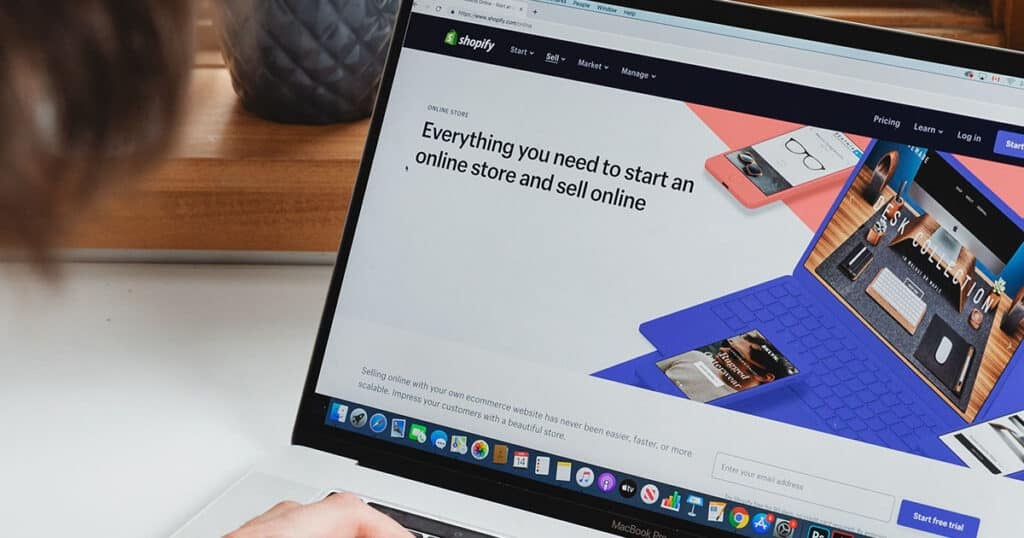
4. Choose your Template or Theme
The next step is to choose your website template.
Also referred to as a theme, a template is basically the layout of your site. These are like pre-made website skeletons, which you can adjust to fit your specific needs.
Think of it as something similar to the structure of your house – it’s what your house looks like before you paint and furnish it.
But it’s not as easy as it sounds, especially if you’ve reached the point of staring at a collection of different template designs and wondering to yourself, “how do I know which template to pick?”
The more website templates you look at, the more they look the same, and the more you feel like you’re just drowning in a sea of endless options.
But we promise that once you come to know how to sift through your options effectively, it can become undeniably fun.
The good news, is that most of the platforms we discussed earlier offer a wide range of templates to pick from, which come with pre-filled example content.
However, if that’s not enough for you, here are a few tips to help you pick the best match:
Consider the Type of Website you’re Creating
Are you clear on the type of website you want to build? Do you know what it wants to say?
The problem is, there are just so many strikingly beautiful templates out there, that if you’re a newbie developing a website, you might be easily tempted to pick a sexy theme for its visually appealing design, instead of one that is more appropriate for your site.
Keep in mind that every website has its own peculiarities, personalities, and dynamics. The key is to pick one that speaks true to your business.
Take your Time
Since choosing the template for your website is the best part of website creation, you might get overcome with the excitement of launching your site, and just grab the first template you see.
But take a deep breath, slow down and take your time.
This way you won’t run the risk of choosing a poor template and having to add things gradually (that’s way harder than you think).
The last thing you’d want is to have to start over, just as your site begins to gain traction.
Look for Customisation Options
If you’re a beginner website creator then you may feel that more customisations simply make your website more complex than it needs to be. But remember to always keep an eye on the future.
You never know, you may have to add non-default elements to your site down the track, and only flexible customisation options will make it possible for you to do so!
In the long run, this can make a big difference to the success of your website, so don’t ride them off entirely.
Select a Responsive Template
Do we even have to explain why? This is a no-brainer! If your site is unresponsive, then it’s outdated.
With responsive templates, you make it possible to adjust your layout across various screen sizes and devices, including mobile and other handheld devices.
The majority of your prospective customers are now using their phones to surf the internet, so don’t forget to tap into this market.
It doesn’t matter which niche or demographic you’re catering to — if you don’t make your website available for handheld devices, you’re only hurting your business.
Choose SEO-Friendly Templates
What’s the use of your website if it doesn’t reach out to more people? Of course, you want your site to be as visible as possible! And because of that, you can’t look past templates with effective SEO.
You can always build a visually stunning website with excellent content, but without proper use of SEO techniques, it’s very hard to have your site rank in search engines.
So, while you choose your template, make sure to pick one that is not just beautiful but also provides a solid hierarchy and easy navigation.
Website users find information faster when they scroll down a single page, not when they flick across different pages on your site.
So, if your website only needs some basic information, you may want to consider choosing a one-page template, where all the information that your web visitors need can be easily found on your home page.

5. Choose your Branding
If you’re reading this, then congratulations! You have reached the most exciting part of the process, which is where you actually start designing your site! It’s time you put what you’ve learnt into practice.
But where do you start?
When designing your website, think about how everything relates to your brand. Wait… brand?
Yes, brand. We are certain you’ve heard about this term several times in the past, but do you know how important brand really is when developing your website?
Just as your personal identity makes you unique, your brand identity is like the signature dish that sets your business apart from the others. And your brand identity design? It’s what shapes your business!
But how do you shape a strong brand identity that can take your business to the next level? Let’s kick off with defining the term “branding”.
In web development, this term refers to the marketing practice of shaping your distinct brand. Your brand is the perception of your business in the eyes of the world.
Alright, let’s dig a little deeper. Let’s say you’re a teenage student who wants to be perceived as cool. Unfortunately, you can’t just force your school mates to have that image of you.
If you want them to perceive you that way, you need to do some work. This work you’re putting towards developing your desired image is your branding.
But does that end there? No, because you also need to make sure that you look the part! So, you wear cool shoes, wear cool clothes, and get a cool haircut—all the tangible elements that can make you look—well, cool.
In building your website, every element, like font style and imagery, that your web visitors see on your site should speak your brand, and tell your story.
But how do you make sure that they are all sending the same message? Let’s take a look at the various elements of your site:
Colour Scheme
Did you know that colour is one of your brand’s most important communication tools?
Consider chains, banks, hotels, or clothing brands — you remember them for their colours. And it’s more than just a coincidence that they chose those colours for their brand identities.
These brands know very well that there’s a lot of psychology behind how people perceive different colours, so they take advantage of this fact by combining colour theory with business. You ought to do the same!
Building your brand is like building a house—you must understand how to use all the tools at your disposal. And one of those tools is colour.
You want to establish that strong emotional connection with your customers, but you can’t achieve that by just creating a logo or storefront.
Font Style
Just like colour, the font styles you use in your web design have a huge impact on what users think about your site.
Why? Because the right typography can help tell your brand story and amplify the impact of your brand. And just as the right font styles can help build your brand, the wrong font could spell trouble!
You have several types of font formats and font families to choose from, depending on the style and tone you’re going for.
For instance, Sans Serif can be used if you want your website to exude a modern, yet minimal, style, while Serif is often a lot more classic and traditional.
By tradition, white-collar businesses use classic styles like Arial and Helvetica because they reflect professionalism. But if you are looking to convey a more fun and playful brand, go for more abstract fonts.
Whatever your preference, keep in mind that you should always strike a balance between interesting and readable. After all, the last thing you would like to happen is for your web visitors to feel alienated.
Imagery
Remember how the old adage goes? “A picture is worth a thousand words…” It’s actually a useful metaphor when we talk about the importance of good quality imagery in website design.
Did you know that we remember pictures more readily than we remember words? So much that when we hear a piece of information, we will only remember 10% of it, unless there’s a picture, which will help us remember up to 65% of the information.
Good imagery is not only important in developing a connection with your audience, they also play a crucial role in your site’s performance as well!
Take a look at the following reasons why you should consider investing in professional photography for your website:
- Good images trigger emotions, build trust, and even modify behaviour
- The images you use on your website can directly impact your site’s conversion rates
- Using stock photos can significantly reduce user trust in your website
Just a little tip though: don’t overload your site with images. Yes, you want your site to be a visual feast for your visitors, but loads of high-quality images might slow your site down.

6. Position and Optimise Your Content
Once you have decided on your branding, the next step would be positioning all the elements on each of your web pages.
The idea of positioning is to allow you to override the basic document flow by producing effects that will catch the attention of your website visitors.
But while there are a number of different types of positioning you can put into effect, one truth can help you make the right choices when it comes to this aspect of web design: people consume content in an “F” format.
This means they are more likely to scan your website in a shape that resembles an “F.” This pretty much explains why most websites have their navigation bars displayed across the top of the page, as it’s where web users are drawn to, thinking it is where the most important stuff is!
But what does designing a website have to do with optimisation?
You need to optimise your content to be competitive, especially now that the fight for attention is more cutthroat than ever. If you don’t know where to start, here are a few SEO tips to help your website rank higher in search engines:
Focus on High-Quality Content
Content is the king of SEO. That means the better content you create, the more likely you are to rank higher on Google.
Think about your Traffic Intent
While huge waves of traffic are great, there comes a point when you realise you don’t really need that much.
Why not reconsider your traffic intent and aim for real audiences? Focus not on the quantity of your traffic but on the quality of it. After all, your ultimate goal is not to attract readers but buyers.
Prove your Authority
If you don’t want Google to throw your website onto the 10th page, let your content speak as if you’re a professional in your niche and you know what you are writing about.
Remember the concept of E.E.A.T (Experience, Expertise, Authority, Trust) that Google uses to rate your content.
Find this article of ours to learn how to write engaging website copy.
7. Go Live
With your content now optimised, you are almost ready to publish your website!
But before you go live, you may want to test your site in preview mode to see if there is anything you need to change before you send it out to the online world.
Are all your links properly working? Do they direct users to the right page? Is your content error free and easy to read? Does your site look good across all platform (desktop, tablet, and mobile)?
How about your loading speeds? Make sure every pages loads in no longer than 5 seconds.
If you were thorough in the first six steps of this guide, all the more reason to be thorough in this step. The more attention you pay to all the little details, the better.
You’ll be surprised how many bugs and errors you might catch at the last minute!
On the day of your launch, it should be all hands-on deck to prepare for the worst and be ready to fix amy issues as quickly as possible.
Think of it as the premiere night of a movie you’re starring in and everything needs to be perfect, because first impressions count.
Check out our Website Pre & Post Launch Checklist to ensure nothing gets missed!

8. Keep Improving
Now that your website is up and running, you might think you have all the time in the world to put your feet up and just see how many views you’re getting. Well, not quite.
Don’t forget that your site is a work-in-progress. Once you have launched it, your next job is to keep track of how it’s performing.
Most of the platforms we have discussed in this guide have built-in analytics, so it’s easy to track how many views you are getting, how much time your web visitors are spending on each page, and what your bounce rate is.
These metrics will help you determine which specific pages need more attention than the others, and which aspects of your website you need to improve.
There is no such thing as relaxing when it comes to running a website. While a lot has already changed in the world of search engine optimisation, it is no secret that Google loves updating its SEO algorithm all the time.
With so many changes to navigate, it is so easy to miss something! Unfortunately, missing something with SEO might just lead to your content becoming invisible.
Don’t let that happen. Don’t let your competitors overtake you. Always keep on top of your site’s performance, and up to date with the latest trends and best SEO practices. This will go a long way!
Conclusion
These days, you can design an awesome website without having to be a tech geek or a web designer. All you have to do is follow the right method and you’ll be fine.
But always keep in mind that the success of your website goes far beyond its visual or emotional impact on your visitors. And that, my budding web creators, is the heart of web design.
If you have any more questions our web design team would be more than happy to help, so don’t be afraid to get in touch!
To your success,
Jackson
